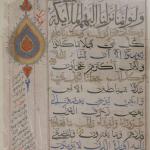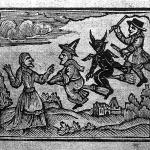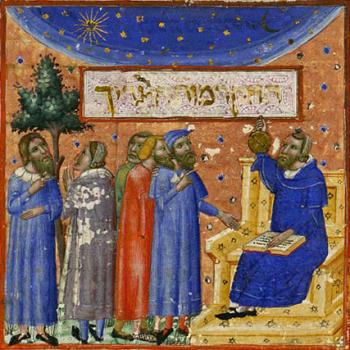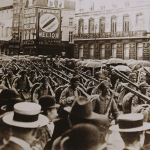This post tells the story of publishing Jewish books in 16th century Venice. What was likely the first commercial publishing company of books in Hebrew began operation in Venice in 1515, and it produced wonderful editions of Hebrew scriptures, including the first printed Talmud.
This is the fourth in a series on how printing technology affected the world’s religions. Johannes Gutenberg built the first printing press in Europe and published the first of his famous Bibles in 1452. What is believed to be the first printed book that was entirely in Hebrew followed in 1475. This was a book of commentaries on the Pentateuch by Rabbi Shlomo ben Itzhak, also known as Rashi (1040-1105), and it was printed in Italy.
The rabbis of Europe hailed the new printing technology as avodat ha-kodesh (‘holy work’). Print technology really was a gift to the Jews of Europe. Before there was printing, many Jewish communities had very limited access to Jewish books. Printing supported the learning and practice of Judaism and the preservation of tradition. And the dissemination of books opened up networks of communication among communities across Europe and eventually beyond Europe.
The Jewish Community of Venice
In the 16th century, this was the Republic of Venice. The island-city of Venice was the capital, but the Republic extended into what is now the Italian mainland. There is evidence that Ashkenazi Jews from central Europe had lived in the Republic of Venice since at least the 13th century. Then in 1492, Ferdinand and Isabelle expelled the Sephardic Jews from Spain. The Sepharadim scattered to many parts of the world, and many of them came to Venice.
For a long time Jews were not allowed to live in the city, and so they settled on the mainland. In 1516 Venice officials set aside a seven-acre section of the city exclusively for Jews. This neighborhood of the city was completely surrounded by canals and had been the site of a foundry — in the Italian of the time, a getto. Yes, this was one of the the first Jewish ghettos. But in the 16th century, the Jews of the Venice ghetto prospered and enjoyed social and business relationships with the city’s non-Jewish residents. In fact, the ghetto became a cultural hub. Historians point out that William Shakespeare’s play The Merchant of Venice, written in the late 1590s, could only have been set in Venice. No where else in 16th century Europe did Jew and gentile interact as freely as did the characters of the play.
Venice also became a publishing center for Hebrew books. Nearly one-third of all Hebrew books printed in Europe before 1650 were printed in Venice. And this happened in spite of the fact that the Republic of Venice, for a time anyway, prohibited Jews from publishing books.
The First Rabbinical Bible
The first publisher of Hebrew books in Venice was a Christian from Antwerp named Daniel Bomberg. Even Bomberg had a hard time getting government permission to print books in Hebrew. Several applications were denied. Eventually he paid the government of Venice the sum of 500 gold ducats — which was, um, a lot — for a ten-year license to publish in Hebrew.
Bomberg set up a printing shop in 1515 and acquired a partner/assistant named Felice da Prato (in some sources, his name is Felix Pratensis), a Christian friar who had been born and raised Jewish. In 1517 the pair published the first Rabbinical Bible. This edition had four parts, each with its own title page. Three are in Hebrew: the Torah (or Pentateuch); the Neviʾim, or books of the Prophets; and the Ketuvim (or Hagiographa). The final section presents the scriptures in Aramaic. The scriptures were typeset in columns next to commentaries on the texts by renowned rabbinical scholars. Felice da Prato edited the work. And the edition was improbably dedicated to Pope Leo X.
The Jews of Venice refused to accept Felice da Prato’s Rabbinical Bible (which was probably intended for Hebrew scholars, both Jew and Christian). It wasn’t just the dedication; they also objected to some of Felice da Prato’s choices of commentary. They would wait for another edition, thanks. Bomberg published a revised and improved edition of the Rabbinical Bible in 1525, edited by the entirely Jewish Yaaqov ben Chayyim.
The First Printed Talmud
Daniel Bomberg also published the first printed Talmud, which presents rabbinical law. The Babylonian Talmud was printed in twelve volumes and the Jerusalem Talmud in four volumes between 1520 and 1523. These were edited by Cornelius Adelkind, another Jew converted to Christianity. Bomberg’s editions of the Talmud were praised both for their accuracy and their typographical beauty and sophistication.
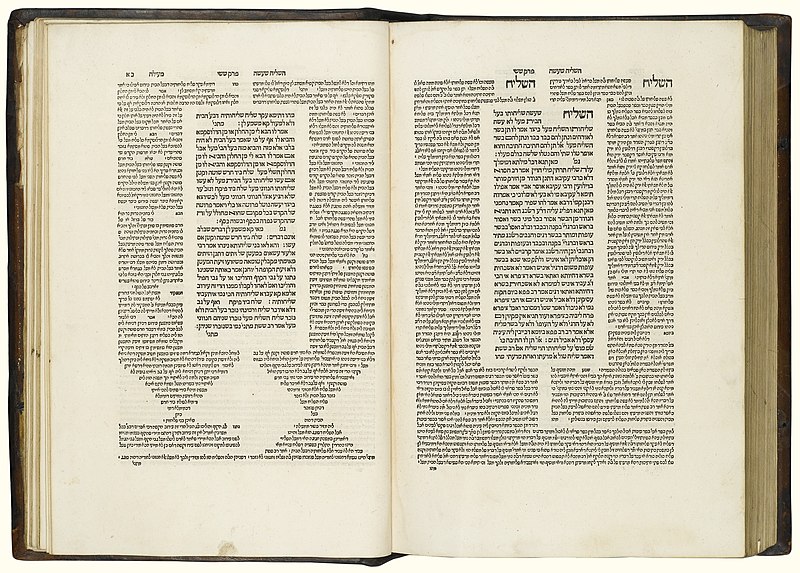
Daniel Bomberg’s publishing house would go on to print nearly 200 editions of Hebrew books. Not all of these titles survive. Some were destroyed in Inquisitions. But those that do survive are among the most valuable of all rare books. In 2015 a Bomberg Babylonian Talmud sold at Sotheby’s in New York for $9 million.
A Great Publishing Tradition
The story of Bomberg’s publishing house is, of course, just the beginning of the larger story of Jewish publishing, which continues to this day. After Bomberg, Venice remained a center of Jewish book publishing for some time, but it was not the only center. Soon Hebrew scriptures were being published throughout Europe and beyond Europe. As I noted in another column, in the 16th century, a large Jewish community in Constantinople became prolific publishers of Hebrew books. Jewish publishers did not limit themselves to scriptures but also produced published popular books in Yiddish.
Other columns in this series on printing the scriptures:
The Impact of Printing on Religion: Buddhism in East Asia


